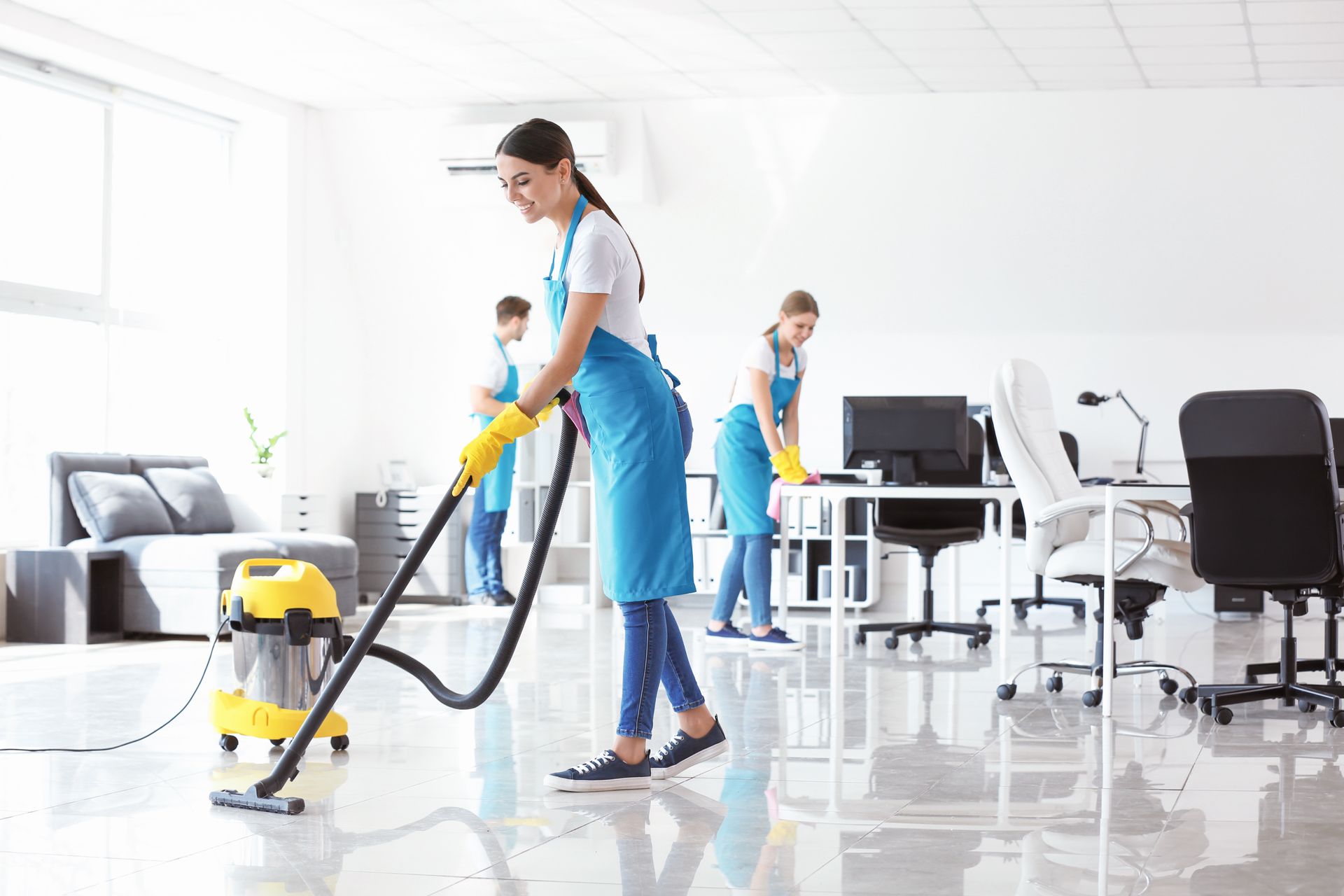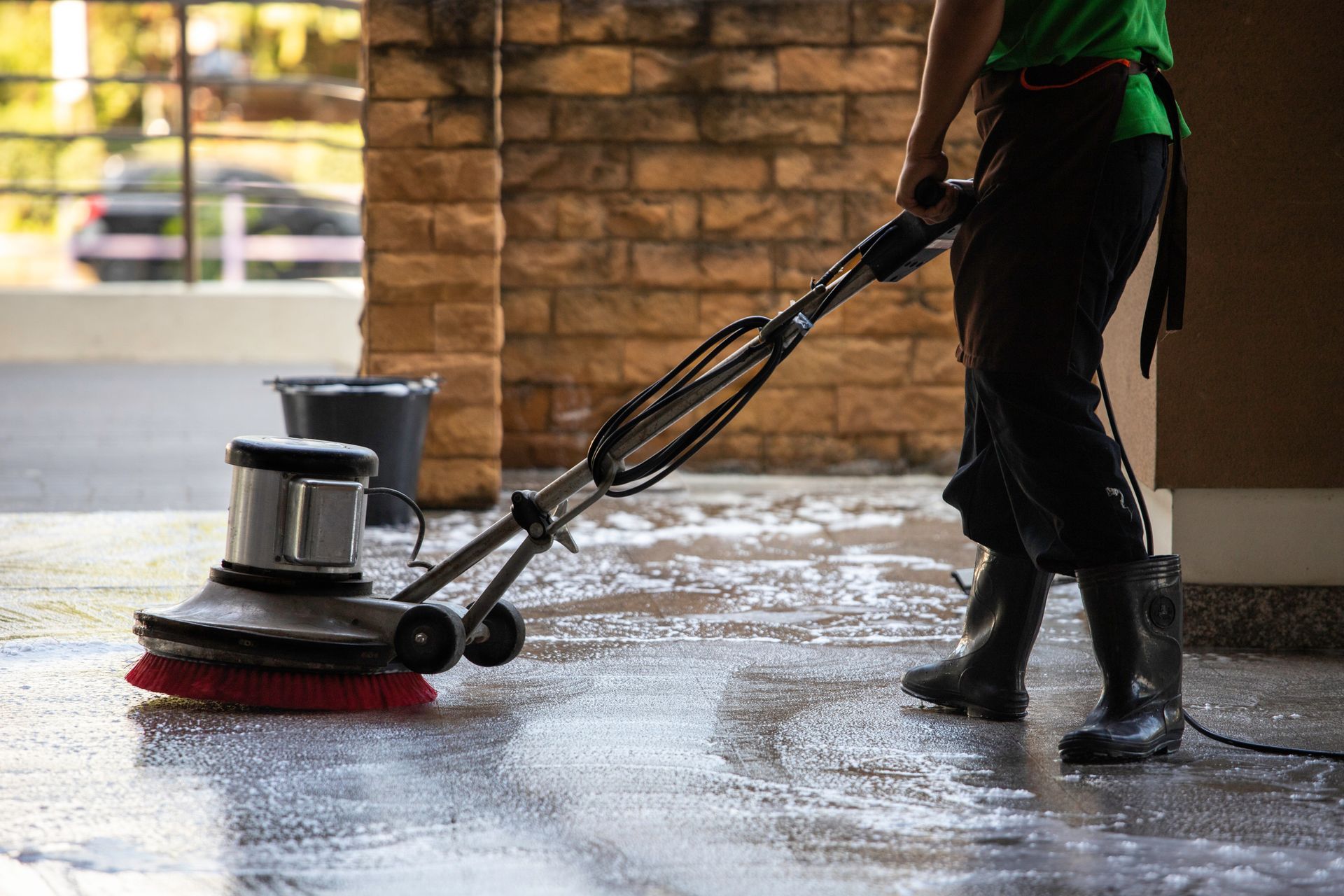What Does a Real Full-Facility Cleaning Strategy Look Like?

Keeping a commercial building clean is more than just mopping floors and emptying trash cans. A truly effective facility cleaning strategy takes into account the entire layout of the space, how it’s used, what kinds of surfaces need to be disinfected, and how foot traffic and seasonal conditions impact cleanliness and hygiene over time.
At ProEthic Building Services, we specialize in building-wide cleaning programs that go beyond surface-level tidying. A professional cleaning strategy is designed to maintain not only appearance, but also health, safety, and equipment longevity.
1. Step One: Evaluating the Building Layout and Usage Patterns
Every commercial building is different. That’s why the first step in a full-facility cleaning plan is always a thorough walkthrough and evaluation.
A cleaning professional starts by identifying zones within the building. These are areas that serve different functions and therefore require different levels of care.
For example:
- High-traffic areas like lobbies, hallways, elevators, and shared breakrooms need more frequent cleaning due to the volume of people coming through.
- Restrooms and locker rooms require daily disinfection to prevent odors, bacterial buildup, and compliance issues.
- Shared equipment such as printers, coffee machines, and fitness equipment are hotspots for germs and often requires targeted sanitation.
- Administrative offices may need trash emptied, dusting, and vacuuming, but less rigorous disinfecting.
- Glass surfaces such as large windows, interior glass walls, and entryway doors require regular cleaning to maintain a professional appearance and reduce buildup from fingerprints, dust, and smudges. Exterior glass may also need special equipment or scheduling considerations depending on building height and sun exposure.
Professionals also take note of architectural features like stairwells, windows, ceiling heights, vents, and entryways that need special tools or access planning.
2. Assessing Surfaces
- Flooring types: Carpeted areas need vacuuming and periodic extraction. Tile or concrete may require scrubbing or polishing. Hardwood needs gentle cleaners and a low-moisture approach to prevent warping or damage.
- Walls and ceilings: These often accumulate dust, cobwebs, and stains over time. Popcorn ceilings, for example, can’t be cleaned the same way as smooth drywall.
- Ceiling tiles and vents: Dirty ceiling vents or tiles not only look bad but can also contribute to poor indoor air quality.
- Countertops and touchpoints: Surfaces made of laminate, stainless steel, granite, or other materials all have different cleaning needs, and using the wrong products can lead to staining or surface damage.
3. Crafting a Custom Cleaning Schedule
Once the zones and materials are assessed, a professional cleaning company can recommend a schedule tailored to the building’s needs. This may include daily or weekly service and recommendations for deeper or less frequent cleaning based on the space and usage patterns.
Daily Tasks might include:
- Trash removal
- Restroom cleaning and disinfection
- Breakroom/kitchenette wipe-downs
- Touchpoint sanitization (door handles, light switches, elevator buttons)
- Vacuuming and sweeping high-traffic areas
Weekly Tasks may involve:
- Dusting surfaces and office equipment
- Cleaning windows and glass partitions
- Mopping and polishing hard floors
- Disinfecting shared equipment more thoroughly
Monthly or Bi-Monthly Tasks often include:
- Cleaning ceiling vents and tiles
- Deep carpet cleaning in office areas
- Baseboard and trim dusting
- Upholstery and cubicle fabric cleaning
Seasonal or Quarterly Deep Cleans might include:
- Strip and wax floors
- Pressure washing building exteriors or sidewalks
- Cleaning HVAC units and filters
- Full-scope restroom deep cleaning
- Cleaning behind large appliances and under equipment
4. Implementing Zoning Protocols
A vital part of any full-facility cleaning plan is zoning. For example, a healthcare clinic might divide its cleaning plan between waiting rooms, exam rooms, admin areas, and restrooms, each with its own cleaning frequency and disinfecting protocol.
Zoning also helps reduce cross-contamination. Dedicated equipment and color-coded supplies ensure that a mop used in the restroom never ends up in the kitchen or breakroom. This level of detail is something DIY or low-cost services may not provide.
5. Continuous Monitoring and Adjustments
No cleaning plan is set in stone. Changing tenants or business needs may necessitate modification of maintenance schedules. Whether a space becomes vacant, a new tenant moves in, or an existing tenant changes how they use the space, a professional team will monitor conditions and adjust the cleaning plan if needed.
Tracking tools, cleanliness audits, and regular check-ins help ensure that the strategy remains effective and scalable.
Ready to Take a Professional Approach to Facility Cleaning in the Valley?
If you’re looking for a building services company in Phoenix that offers flexible cleaning and landscaping plans with an emphasis on accountability and consistent quality, ProEthic Building Services has you covered.
Contact us today at (480) 725-8912 to schedule a consultation and discover how a customized cleaning strategy can improve health, efficiency, and tenant satisfaction across your building.



